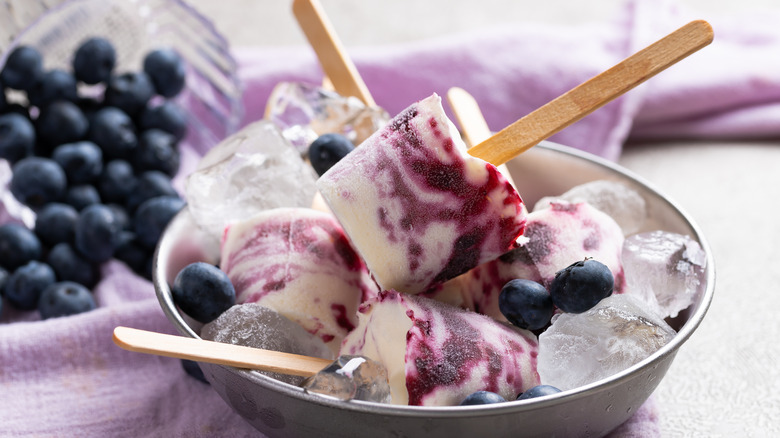The Frozen Yogurt You're Eating Might Not Actually Be Real Yogurt
Have you ever found yourself standing in front of the frozen dessert section of your grocery store, trying to decide between frozen yogurt or ice cream? If so, chances are you've reached for a tub of frozen yogurt under the impression that it's a healthier choice. After all, it's just regular yogurt that's been frozen, right?
Not so fast. It turns out that the frozen yogurt you're eating might not actually be real yogurt at all. Unlike traditional yogurt, which is regulated by the FDA and requires a seal indicating the presence of live and active cultures, frozen yogurt falls into a legal grey area. This means that there's no guarantee your favorite frozen yogurt contains the same beneficial bacteria as its unfrozen counterpart.
But before you turn to ice cream as a safer bet, consider this: Ice cream is typically loaded with milk fat or cream, leading to high fat and saturated fat content. Meanwhile, frozen yogurt is made by fermenting milk with yogurt cultures, resulting in a tangy, refreshing treat that's lower in fat and calories. So, what's a dessert lover to do? It's important to do your research and read those labels. Here's how to identify real frozen yogurt the next time you're craving a cold, sweet treat.
So what's actually in frozen yogurt?
Despite what the name may suggest, most frozen yogurt products in the United States are closer to ice milk than actual yogurt. In fact, most frozen yogurts feature a blend of main ingredients that is only 10% plain yogurt. The other 90%? An ice milk mix. How does that even happen if it's marketed as yogurt?
Green Chef's dietitian, Gabby Geerts, RD, told Women's Health, "Frozen yogurt begins like refrigerated yogurt, by adding two essential live cultures (Lactobacillus bulgaricus and Streptococcus thermophilis) to milk." That doesn't mean the yogurt retains those live gut-cleansing cultures throughout the entire process. "Most of the live bacterial cultures survive freezing, [but] varying production methods and added ingredients mean all frozen yogurt products are not created equal."
It's worth pointing out that the exact ingredients in any frozen yogurt product vary depending on where you get it from. While frozen yogurt can be made from 100% plain yogurt in some places, it's still common for manufacturers to include additives such as stabilizers and emulsifiers to achieve the desired consistency and shelf life (you can pretty much bet on seeing these ingredients in most low-fat varieties).
How to find frozen yogurt that's actually yogurt
For those who love frozen yogurt but want to make sure they're getting the real deal, take a peek at the ingredient list and ensure you see "live and active cultures" listed. These are the friendly bacteria that give yogurt its tart flavor and provide a plethora of health benefits, from aiding in digestion to boosting the immune system.
If you're feeling adventurous and want to try something other than the classic tart flavor, consider going for a plain, non-fat Greek froyo. Or, as Gabby Geerts, RD, suggested when speaking with Women's Health, find yogurt bars instead of visiting a frozen yogurt shop. "Made with Greek yogurt, these bars are creamy and higher in protein," she said. Plus, with pre-portioned servings, it's easy to indulge in a sweet treat without going overboard.
As a last (and much healthier) resort, you can turn yogurt into homemade popsicles. Use leftover vanilla Greek yogurt, sea salt, and honey to craft a healthy frozen pop filled with live cultures and all of the other health benefits of real yogurt (mix in some fresh berries or frozen fruit for an added burst of color and flavor).
Ultimately, when it comes to finding frozen yogurt that's actually yogurt, it's all about reading those labels and making informed choices. With the right selection, you can treat yourself to a delicious and nutritious dessert that won't leave you feeling like you've sacrificed flavor for health.


